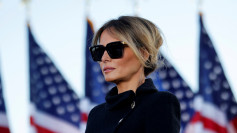President Donald Trump on Tuesday revealed the conceptual framework for the "Golden Dome," a $175 billion missile defense initiative that, for the first time, proposes placing U.S. interceptors in space to counter advanced threats from Russia and China. The announcement has drawn early reactions from Moscow, with the Kremlin indicating the project may prompt renewed U.S.-Russia arms control discussions.
Trump presented the concept from the Oval Office, seated beside a gold-hued map of the continental U.S. overlaid with illustrations of missile intercepts.Trump said he expects the system will be "fully operational before the end of my term" and that it would intercept missiles "even if they are launched from space."
The system, which is still in early development, is envisioned as a multilayered shield capable of engaging threats at all four phases of a missile's trajectory. U.S. officials have categorized possible configurations as medium, high, or "extra high" in cost and scope, with the most ambitious version potentially requiring hundreds of satellites and interceptors in orbit. The Pentagon has not released a formal capability document, and the Golden Dome remains conceptual.
General Michael Guetlein, currently serving as vice chief of space operations, has been tapped to oversee the program. These "represent new and emerging requirements for missions that have never before been accomplished by military space organizations," General Chance Saltzman, chief of the U.S. Space Force, told Congress Tuesday.
The Pentagon estimates the space-based elements alone could cost over $540 billion in the next two decades, according to the Congressional Budget Office. Trump has included an initial $25 billion request in his pending tax bill. Secretary of the Air Force Troy Meink told lawmakers the initiative is "still in the conceptual stage," with final requirements yet to be defined.
Russia responded cautiously. Kremlin spokesman Dmitry Peskov called the announcement "a sovereign matter" for the U.S. but warned it could have geopolitical consequences. "In the foreseeable future, the very course of events requires the resumption of contacts on issues of strategic stability," Peskov said. He added that many "nuances" of the U.S. project remain unclear.
In a joint statement earlier this month, China and Russia described the Golden Dome concept as "deeply destabilizing in nature," accusing the U.S. of seeking to weaponize outer space. The proposed system is inspired in part by Israel's land-based Iron Dome, but significantly expands the defense architecture into orbital space.
Trump said he had not yet spoken with Russian President Vladimir Putin about the missile shield, but added, "At the right time, we will." The White House has not indicated whether Golden Dome would be subject to any future arms control negotiations.
The U.S. previously withdrew from key arms control frameworks, including the 1972 Anti-Ballistic Missile Treaty and the 1987 Intermediate-Range Nuclear Forces Treaty, citing Russian violations-claims Moscow has denied. "This base must be recreated both in the interests of our two countries and in the interests of security throughout the planet," Peskov said.
While the U.S. currently fields multiple missile defense systems-such as the Patriot, THAAD, and ground-based interceptors-none include space-based weapons. Existing missile warning satellites may be integrated into the new architecture, according to officials.






